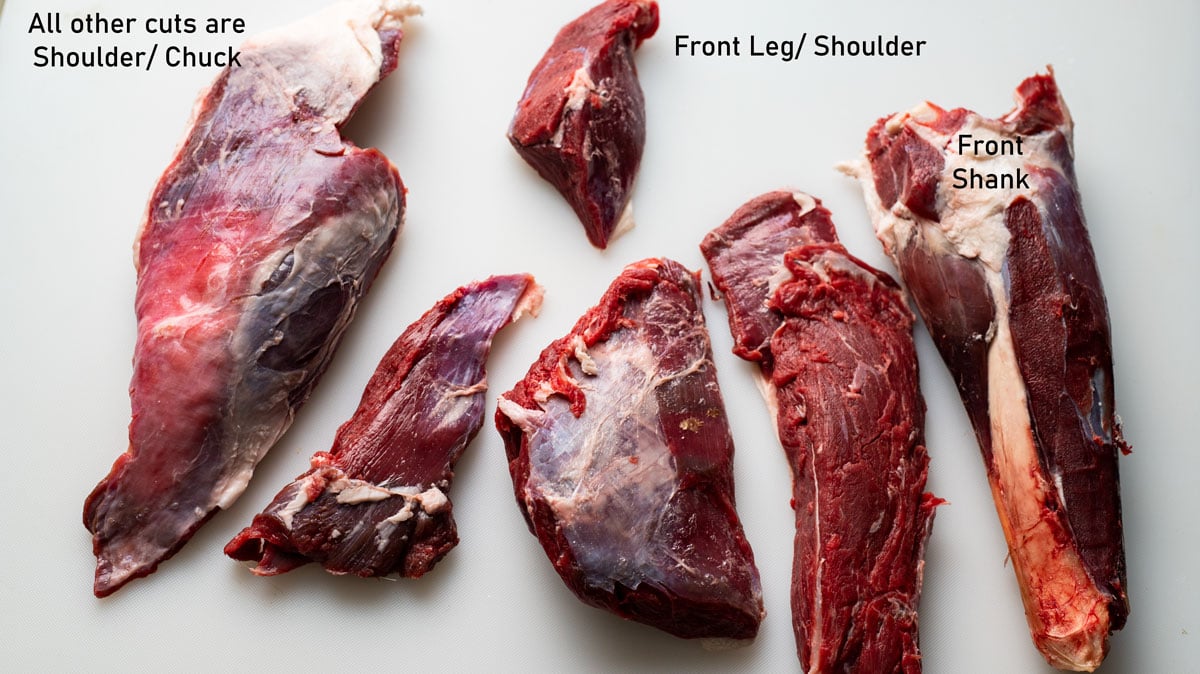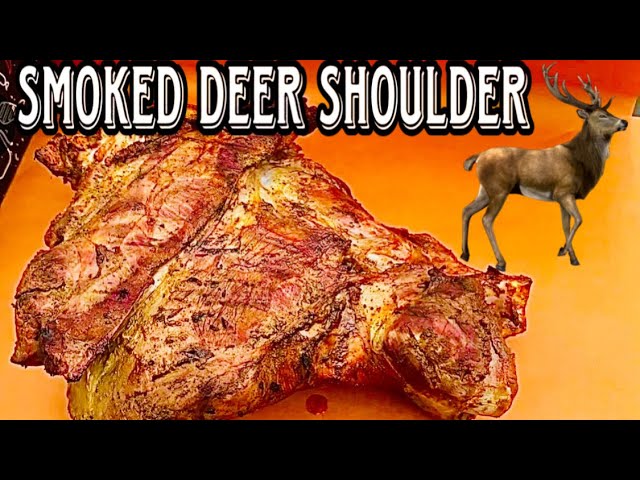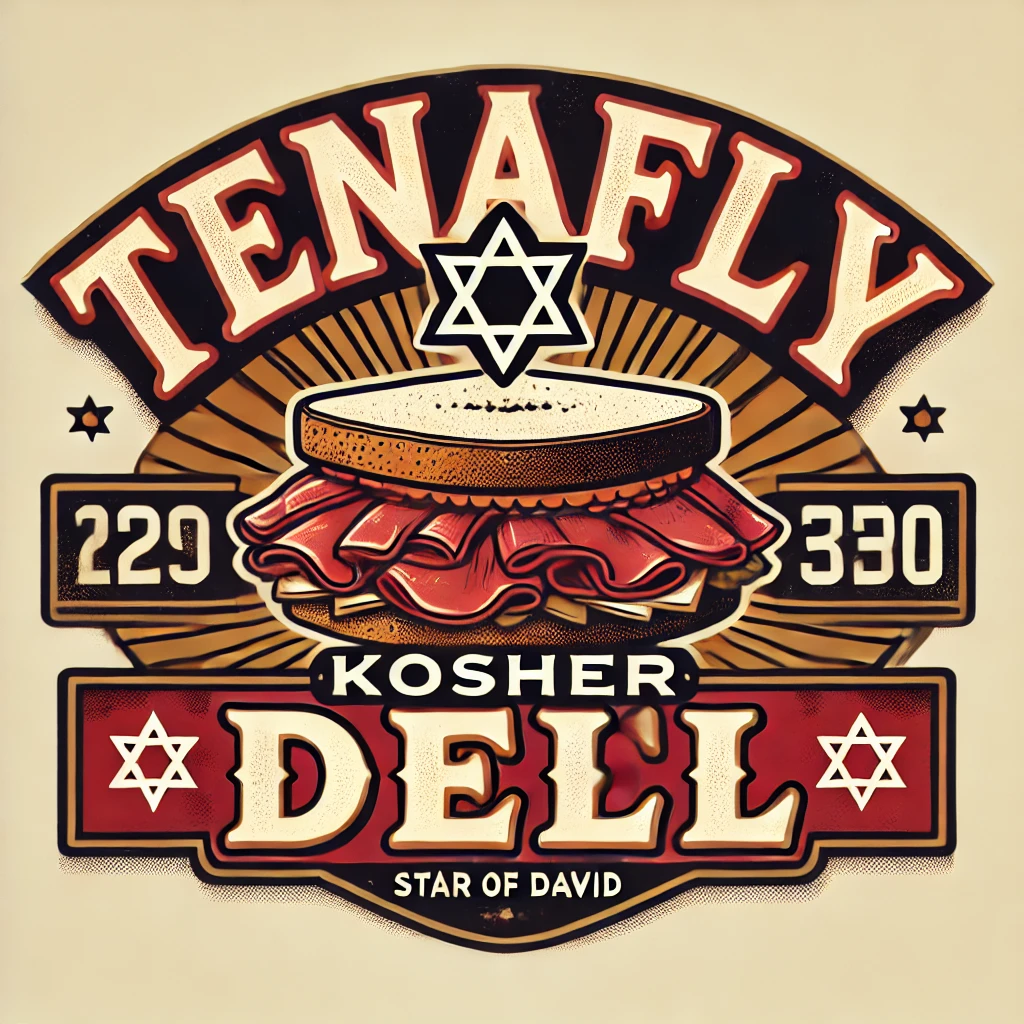
Quick Summary: Smoking Deer Shoulder
Smoking a deer shoulder involves brining the meat for 1-4 days, applying a dry rub, then smoking at 225°F-250°F for 4-8 hours until the internal temperature reaches 160°F. The low-and-slow method breaks down tough connective tissues while preserving moisture, resulting in tender, flavorful venison. A resting period of at least 30 minutes after smoking is crucial for juiciness.
Materials Needed
Equipment
- Smoker: Any type (electric, pellet, offset, or charcoal)
- Meat Thermometer: Preferably digital with probe
- Sharp Knife: For trimming and slicing
- Large Container: For brining
- Wood Chips/Chunks: Oak, hickory, maple, or cherry
- Water Pan: For maintaining humidity
- Butcher Paper or Aluminum Foil: Optional, for wrapping
Ingredients for Basic Brine
- 1 gallon cold water
- 1 cup kosher salt
- 1/2 cup brown sugar
- 3 tablespoons black peppercorns
- 3-4 sprigs fresh thyme (or 1 tablespoon dried)
- 3 bay leaves
- 4 cloves garlic, smashed
Ingredients for Dry Rub
- 2 tablespoons brown sugar
- 2 tablespoons smoked paprika
- 1 tablespoon garlic powder
- 1 tablespoon onion powder
- 1 tablespoon black pepper
- 1 teaspoon cayenne pepper (optional, for heat)
- 1 tablespoon dried herbs (thyme, rosemary, or sage)
| Stage | Temperature Range | Duration | Indicators |
|---|---|---|---|
| Initial Smoking | 225°F – 235°F | 2-3 hours | Thin blue smoke, meat developing color |
| Cooking Phase | 235°F – 250°F | 2-5 hours | Internal temp reaching 140°F, bark forming |
| Final Doneness | Same as cooking | Until complete | Internal temp 160°F, fork-tender |
| Resting Period | Room temperature | 30+ minutes | Juices redistributing |
Pro Tip: Brining Your Deer Shoulder
For maximum tenderness and flavor, brine your deer shoulder for 1-4 days in a solution of kosher salt, brown sugar, and herbs. This step is crucial for breaking down tough connective tissue and enhancing moisture retention during smoking.
- Trim and Prepare: Remove silver skin and excess fat
- Brine: Soak for 1-4 days in salt/sugar solution
- Apply Dry Rub: Season with your preferred spice mix
- Preheat Smoker: Set to 225°F-250°F
- Smoke: Maintain temperature for 4-8 hours
- Rest: Allow meat to rest at least 30 minutes before slicing
| Stage | Temperature Range | Duration | Indicators |
|---|---|---|---|
| Initial Smoking | 225°F – 235°F | 2-3 hours | Thin blue smoke |
| Cooking Phase | 235°F – 250°F | 2-5 hours | Internal temp reaching 140°F |
| Final Doneness | N/A | Until complete | Internal temp 160°F |
Getting to Know the Deer Shoulder Cut
Quick Info About Deer Shoulder
The deer shoulder is a great cut that lots of folks love for its rich flavor. Even though it’s often overlooked, it’s got serious potential for turning into a tender dish if you know what you’re doing.
When you’re diving into the deer shoulder details, remember these key points:
- Where it Comes From: The shoulder comes from the front part of the deer, including the front legs. It’s made up of different muscle groups held together by connective tissue, which can make it tough if you don’t cook it right.
- How to Cook It: To get that juicy fork-tender goodness, the deer shoulder really shines with slow cooking or braising before you smoke it. This helps break down the fat and collagen, leading to some amazing meat.
- Nutritional Perks: This cut is leaner than a lot of meats but still super flavorful, making it a healthier choice for anyone wanting to enjoy rich taste without too much fat.
Different Cuts of Deer Shoulder
You can break down the deer shoulder into a few different cuts, each with its own unique traits:
- Shoulder Roasts: This big cut is perfect for pot roasts, slow-cooked with veggies and seasonings to bring out amazing flavors.
- Shoulder Steaks: These smaller pieces are great for grilling or pan-searing and soak up marinades really well.
- Ground Venison: This part is awesome for grinding, giving you flavorful burgers or sausages.
- Bristle Cuts: These less common cuts come from around the shoulder blade and work well for braising or tossing into stews.
Once you get to know these various cuts from the deer shoulder, you can pick the best cooking methods to bring out the best in each, ensuring you get mouthwatering results every time. Next up, we’ll talk about how to prep this cut for smoking and make the most of its flavor.

How to Prep Deer Shoulder for Smoking
Getting the Meat Ready
- Trim Off Extra Fat and Silver Skin: Start by cutting away any thick fat layers and silver skin, which can mess up the flavors and textures when cooking. Having a sharp knife and a steady hand makes this a lot easier.
- Think About Aging: Letting the meat age for a few days—up to a week—can really boost the flavors and tenderness. Just make sure it stays in a controlled spot so it doesn’t spoil.
Once you’ve got that initial prep done, the next big step is to make sure the meat gets tender before smoking it. You can do this with slow cooking or braising. Cooking the shoulder slowly until it’s just fork-tender helps break down those tougher bits, setting you up for a super tasty smoked dish.
Seasoning and Marinades
Now that your deer shoulder is prepped, it’s time to pack in the flavor with seasoning and marinades. One of the best ways to guarantee juicy, tasty meat is through brining:
- Brine Mix: Whip up a simple brine using water, kosher salt, brown sugar, and some dried herbs like thyme and black pepper. Soak the meat in this for about 1 to 4 days—it really gets deep into the meat and boosts the flavor.
- Dry Rub Option: After brining, think about adding a dry rub for even more flavor. Mix up your favorite spices, but watch the salt since the meat has absorbed some during brining.
For instance, a blend of smoked paprika, garlic powder, and a dash of cayenne gives a nice kick that goes perfectly with the venison’s natural taste.
If you want an extra touch, glaze the meat just before smoking. A mix of honey or sorghum adds a sweet twist and helps create a tasty caramelized crust.
With the meat all prepped and seasoned, it’s time to dive into the smoking techniques that will take your deer shoulder to the next level.

Smoking Techniques for a Tender Deer Shoulder
Choosing the Right Wood Chips
The type of wood chips you use is a big deal when it comes to flavoring your smoked deer shoulder. If you want that classic, bold taste, think about mixing oak and hickory wood chips or chunks.
- Oak: Gives a strong flavor that balances well without being too overpowering; it’s a favorite among pitmasters.
- Hickory: Brings a sweet and smoky kick, perfect for venison and really boosts the natural richness of the meat.
- Maple or Cherry: If you’re after a sweeter, slightly fruity touch, throwing in some maple or cherry wood adds a lovely complexity.
Pro Tip: Soak your wood chips in water for about 30 minutes before using them in the smoker. This helps them smolder rather than burn, giving your meat a consistent flavor infusion.
Keeping Track of Temperature and Smoke Levels
Managing the temperature while smoking your deer shoulder is key to getting even cooking without drying it out. Here’s how to handle it:
- Ideal Temperature Range: Set your smoker to a temp between 225°F and 250°F. This low-and-slow method helps get that tender texture and builds a deep flavor.
- Watch the Smoke: Look for a steady stream of thin, blue smoke. If it’s thick and white, it usually means it’s too hot or the wood is burning too fast, which can make the meat taste bitter.
As you’re keeping an eye on the smoker, remember that patience is your best friend. Avoid opening the lid too much to keep a stable environment.
Smoking Time and Resting Period
The smoking time can vary based on how thick your deer shoulder is but you can generally expect it to take around 4 to 8 hours. A good tip is to aim for an internal temp of about 160°F.
- Checking for Doneness: Using a meat thermometer is the best way to make sure you reach that perfect tender spot.
- Resting Period: After you take the deer shoulder out of the smoker, let it rest for at least 30 minutes. This step is really important because it lets the juices redistribute, so every slice is juicy and full of flavor.
No matter if you’re serving it at a family gathering or having a quiet dinner at home, nailing these smoking techniques will lead you to a delicious deer shoulder that hits all the right culinary notes. Next, we’ll look into tips for serving and enjoying your smoked deer shoulder!

Serving and Enjoying the Smoked Deer Shoulder
Slicing and Presentation
It’s finally time to show off that gorgeous smoked deer shoulder! How you slice and present the meat really matters for the overall dining experience.
- Slicing Technique: Start by placing the shoulder on a cutting board. Use a sharp knife to cut against the grain; this way, you’ll get tender pieces. Aim for slices about 1/4 to 1/2 inch thick—this thickness lets the flavor shine and makes each bite enjoyable.
- Presentation Tips: Go for a rustic look by arranging the meat on a big platter. Maybe add some fresh herbs like parsley or thyme for a pop of color. You can even sprinkle some coarse salt on top to boost the flavors and keep the meat juicy.
Personal story: I remember serving a smoked deer shoulder at a family gathering and when everyone caught a whiff of that smoky aroma, their faces lit up. When it was time to serve, I arranged the slices on a wooden plank, and the way it looked just added to its amazing flavor.
Pairing with Sides
To amp up your meal even more, think about serving side dishes that complement the rich and smoky flavor of the deer shoulder. Here are some great ideas:
- Starch Options:
- Mashed Potatoes: Buttery, creamy mashed potatoes can balance out the texture and flavor of the meat.
- Rice Pilaf: Fluffy rice mixed with herbs and nuts makes a refreshing side.
- Veggie Sides:
- Roasted Veggies: Carrots, Brussels sprouts, or sweet potatoes can add a touch of sweetness that pairs beautifully with the smoky meat.
- Coleslaw: A crunchy, tangy slaw adds a refreshing contrast that brightens your plate.
- Sauces:
- Mustard BBQ Sauce: This tangy sauce can elevate the meat’s flavor and throw in a zesty kick.
- Chimichurri: This colorful herb sauce brings freshness and a different flavor twist.
Every meal is a chance to get creative, and with a smoked deer shoulder, the options are endless. By slicing thoughtfully and pairing with great sides, you can pull off a memorable feast that your guests will love. Next, we’ll discuss some handy tips for mastering the art of smoking deer shoulder!
Tips for Perfecting the Art of Smoking Deer Shoulder
How to Fix Common Problems
Even experienced cooks bump into issues when smoking deer shoulder. Here are some common hiccups and how to solve them:
- Meat is Too Tough: If your smoked venison turns out tough, it probably didn’t cook long enough or at a low enough temp. Always make sure you slow-cook the meat until it’s fork-tender before smoking.
- Dry Meat: To avoid drying it out, keep your smoking temp below 250°F. Basting the meat every 30 minutes while smoking can help too. If it’s still turning out dry, serving it with a tasty sauce can add some moisture back in.
- Too Smoky Flavor: If the smoke flavor is too strong, mix up the type of wood chips you use. Try blending milder woods like cherry or apple with hickory for a smoother taste.
- Uneven Cooking: Keep an eye on your smoker’s temperature and the airflow. If parts of your smoker are hotter, rotate the meat halfway through to promote even cooking.
Advanced Flavor Techniques
If you want to take your smoking skills to a new level, here are some tips to enhance flavor:
- Play Around with Dry Rubs: Before smoking, add a dry rub made just for venison. A mix of brown sugar, smoked paprika, garlic powder, and cumin can create a nice crust that adds depth.
- Marinate Before Brining: Try marinating the meat for a few hours or overnight with a vinegar, soy sauce, and your go-to herbs mix. This not only adds another flavor layer but helps tenderize the meat too.
- Infuse Aromatics: Put herbs and aromatics inside the cavity of the shoulder while smoking. Rosemary, thyme, and garlic cloves work well. This gives your smoking dish a nice flavor boost and a beautiful aroma.
- Use a Water Pan: Placing a water pan in your smoker helps manage temperature and adds humidity. This keeps the meat from drying out and creates a moist environment for those flavors to really shine.
Looking back, I remember one time I thought I’d over-smoked a deer shoulder. In a hurry, I made a tangy apple cider barbecue sauce to serve alongside, and it ended up being the star of the meal. Sometimes, improvisation leads to tasty surprises!
These tips will really change things up for you when smoking, ensuring you end up with mouthwatering, tender venison every time. Enjoy the process and let your kitchen creativity flow!
Frequently Asked Questions About Smoking Deer Shoulder
What temperature should deer shoulder be smoked to?
Deer shoulder should be smoked at a temperature between 225°F and 250°F. The internal temperature should reach approximately 160°F for safe consumption. Since venison is a lean meat, smoking at lower temperatures helps prevent it from drying out while breaking down the tougher connective tissues.
How long does it take to smoke a deer shoulder?
Smoking a deer shoulder typically takes between 4 to 8 hours, depending on the size of the cut and your smoker’s temperature. A good rule of thumb is to allow about 1.5 hours per pound of meat when smoking at 225°F. Always use a meat thermometer to verify doneness rather than relying solely on time.
Should I wrap deer shoulder when smoking?
While not absolutely necessary, wrapping deer shoulder in butcher paper or aluminum foil after 2-3 hours of smoking (when internal temperature reaches about 140°F) can help retain moisture and speed up the cooking process. This technique, known as the “Texas Crutch,” is particularly useful if the meat appears to be drying out or if you hit a temperature stall.
What’s the best wood for smoking deer shoulder?
The best woods for smoking deer shoulder are oak, hickory, maple, and cherry. Oak provides a medium-strong flavor that balances well with venison without overpowering it. Hickory offers a stronger, more traditional smoky flavor. Fruit woods like cherry or apple provide a milder, sweeter smoke that complements the natural gaminess of venison. For best results, consider mixing woods – hickory for strength with cherry for sweetness works particularly well.
How do I keep deer shoulder from drying out in the smoker?
To prevent deer shoulder from drying out when smoking: 1) Brine the meat for 1-4 days before smoking, 2) Maintain a consistent low temperature (225°F-250°F), 3) Use a water pan in your smoker to increase humidity, 4) Consider basting the meat with a mixture of apple cider vinegar and oil every hour, 5) Wrap the shoulder in butcher paper or foil after a few hours of smoking, and 6) Always let the meat rest for at least 30 minutes after smoking before slicing.

A Bergen County institution celebrating authentic Jewish cuisine since 1985. Our pastrami—brined for 14 days, smoked over applewood for 12 hours, and steamed to perfection—creates a melt-in-your-mouth experience that rivals Manhattan’s finest delis. Our rye bread is baked fresh daily using a century-old recipe from Poland. Featured in Food & Wine’s “Top 10 Delicatessens in America” and on Food Network’s “Best Thing I Ever Ate.” Chef Moshe Greenbaum, a third-generation deli master trained at the Culinary Institute of America, ensures every sandwich meets our exacting standards. No wonder our customers drive from three states away.
Leave a Reply